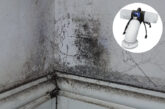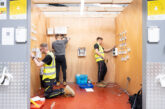
With less than a week to go until the DPC for Amendment 3:2024 to BS 7671:2018 closes, Mark Coles, Head of Technical Regulations at the Institution of Engineering & Technology (IET), gives an update and dispels a myth going on in the industry.
We announced the Draft for Public Consultation with BSI on 8 May 2024 following a bulletin from BEAMA, which aimed to clarify the differences between connections for unidirectional and bidirectional RCDs and circuit-breakers.
With multiple sources of supply connected within an installation, i.e. the DNO supply from the street, battery storage, solar PV inverter, etc., protective devices need to be able to deal with these supplies that can be connected on either side of the device. Some devices with terminals labelled as ‘supply and load’, known as ‘unidirectional devices’, cannot accept an electrical supply on the load side. In this case, the protective device needs to be ‘bidirectional’.
When issues arise, it’s important that standards take on the necessary changes as quickly as possible. This fast-track route to amendment will allow designers and installers to quickly get the information out to their clients and promote safety in electrical installations.
We’re encouraging comments and proposals for changes – your input can have vital influence to help shape the final changes introduced in this new amendment and will help electrical professionals keep up to date with new and innovative technologies.
We want to clarify that this is not a new book coming out, it’s a free-to-download PDF, due to be published later this summer that will be an addition to BS 7671:2018+A2:2022. So, to be up to date you’ll need both the brown book and a copy of Amendment 3:2024.
Together with BSI, we jointly manage JPEL/64, the committee responsible for BS 7671.
Comments on the DPC can be submitted through BSI’s Standards Development portal by 5 June 2024 at 5pm.
Find out more by clicking here








